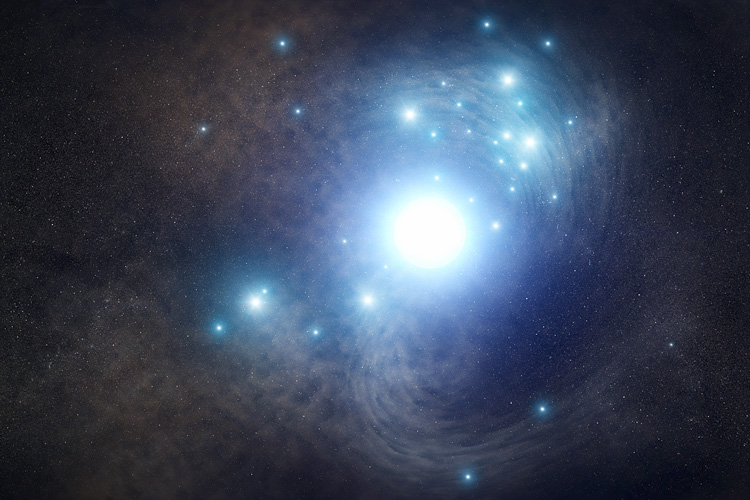News
Tracking down a star that disappeared 65 million years ago
 An artist's concept of a blue supergiant star that astronomers believe exploded as a Type Ic supernova detected by the Hubble Space Telescope in 2017. Sixty-five million years ago, the star sat inside a cluster of young stars in the spiral galaxy NGC 3938, perhaps as massive as 50 suns and burning at a furious rate, making it hotter and bluer than our sun. If astronomers are right, after it shed its outer layers of hydrogen and helium, it’s core collapsed, releasing energy that blew the star’s outer layers into space. (Image courtesy of NASA, ESA and J. Olmsted of STScI)
An artist's concept of a blue supergiant star that astronomers believe exploded as a Type Ic supernova detected by the Hubble Space Telescope in 2017. Sixty-five million years ago, the star sat inside a cluster of young stars in the spiral galaxy NGC 3938, perhaps as massive as 50 suns and burning at a furious rate, making it hotter and bluer than our sun. If astronomers are right, after it shed its outer layers of hydrogen and helium, it’s core collapsed, releasing energy that blew the star’s outer layers into space. (Image courtesy of NASA, ESA and J. Olmsted of STScI) Astronomers may finally have tracked down the type of star that explodes with a distinctive but unusual signature: They show no evidence of hydrogen and helium, by far the most abundant elements in the universe.
Such explosions have been labeled Type Ic supernovae, and make up some 20 percent of all stars that explode when their cores collapse. Most, however, have been observed at such large distances that astronomers could not pinpoint what was there before the explosion blew it to smithereens.
But a team that included UC Berkeley astronomer Alex Filippenko got lucky.
Last year, after a Type Ic supernova dubbed SN 2017ein was discovered by astronomers in Arizona, the group dove into past photos of that region of the sky taken by NASA’s Hubble Space Telescope in search of its progenitor. In the archive from 2007, they found an image of a hot, bright blue object in the exact spot where the supernova was observed. It was located near the center of the relatively nearby spiral galaxy NGC 3938, roughly 65 million light years from Earth, which means the star exploded 65 million years ago.
Based on an assessment of the star by this and another team that discovered the same 2007 image, two possibilities exist for the source’s identity. The pronitor could be a single hefty star between 45 and 55 times the mass of our sun that had earlier shed its hydrogen and helium, perhaps blown off in an intense stellar wind.
